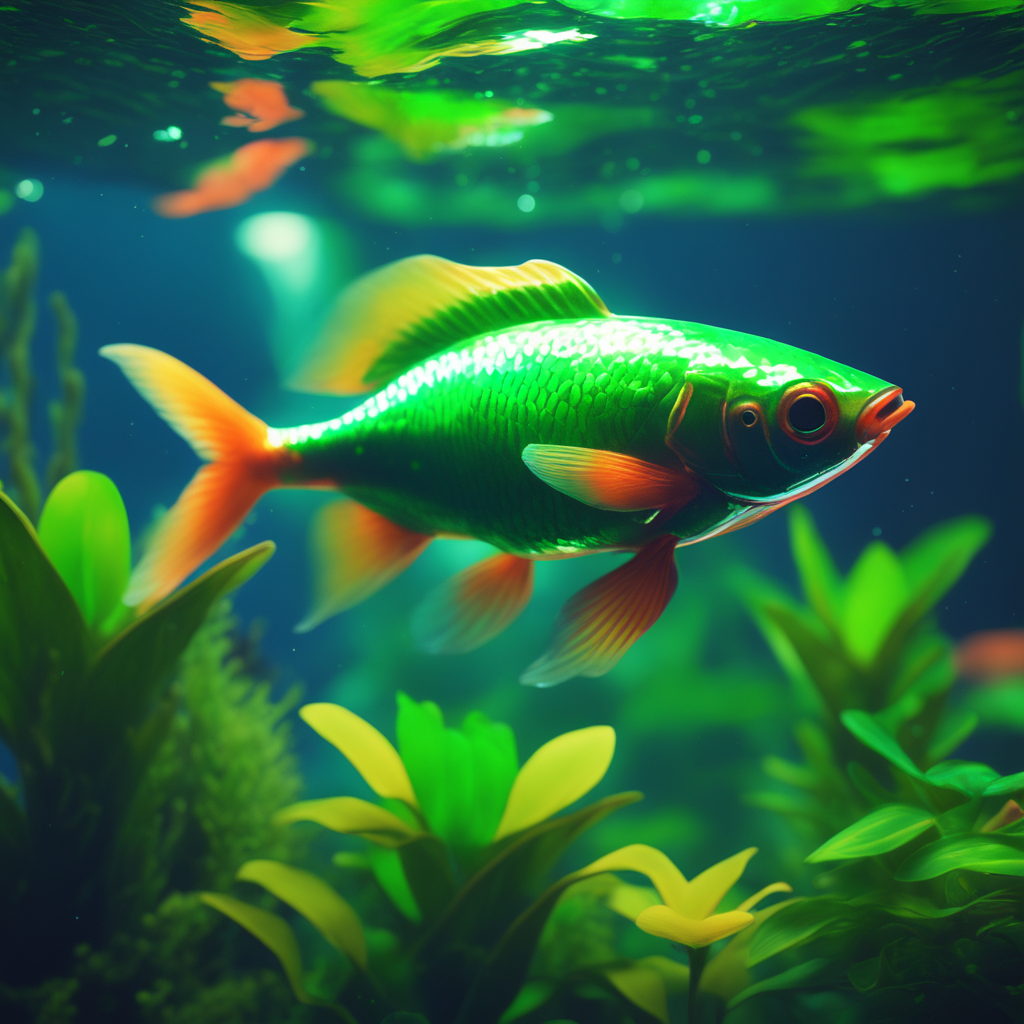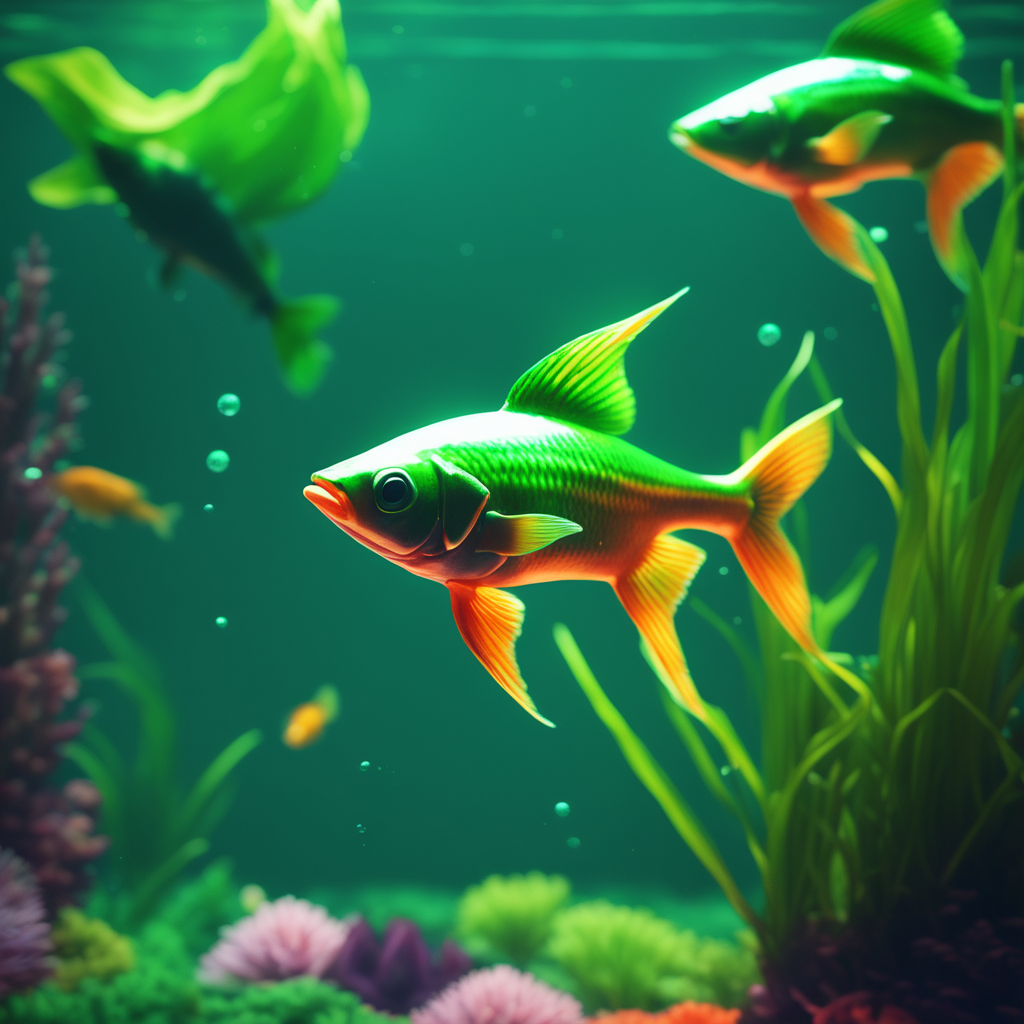Are you interested in learning about the fascinating Buenos Aires Tetra? This small, vibrant fish is native to the freshwater rivers of South America.
With its striking red and black coloration, it is a popular choice for aquarium enthusiasts.
In this article, we will explore the natural habitat and origin of the Buenos Aires Tetra, as well as its physical characteristics, feeding habits, and tank requirements.
Get ready to dive into the world of this captivating aquatic creature!
Here are some quick facts about Buenos Aires Tetra:
- Buenos Aires Tetra, also known as Hyphessobrycon anisitsi, is a popular and beginner-friendly freshwater fish2.
- They are native to the La Plata region of Argentina, Paraguay, and southeastern Brazil, where they can be found in rivers, ponds, lakes, and streams4.
- These tetras have a silver metallic body with a red-colored tail fin, anal fin, and a hint of red in their dorsal fin3.
- The most distinguishing characteristic of the Buenos Aires Tetra is the bold, black ‘cross’ shape on its caudal peduncle5.
- They are social fish that swim in schools, but they should not be kept with smaller fish like neon tetras or long-finned fish like bettas and angelfish, as they may nip at their tankmates’ fins1.
- Buenos Aires Tetras are omnivorous, feeding on worms, crustaceans, insects, and plants in the wild. In an aquarium, they will eat a variety of live, fresh, and flake foods, and their diet should include regular meals of live and frozen foods, such as bloodworms, daphnia, and brine shrimp, as well as vegetables5.
- These tetras are hardy, long-lived, and prolific breeders. They can reach up to 2.75 inches in length and have a lifespan of 5 to 6 years5.
- They are generally a good community fish, but they may occasionally nip at and eat aquarium plants1.
- Buenos Aires tetras are relatively hardy and can tolerate a wide range of water conditions. However, they prefer slightly acidic to neutral water with a pH range of 6.5-7.5, and temperatures between 72-82°F (22-28°C).
- They are schooling fish and are usually found in groups in their natural habitat. It is recommended to keep them in groups of at least 6 individuals in aquariums to mimic their natural behavior.

Habitat and Origin of Buenos Aires Tetra
You can find the Buenos Aires Tetra in the freshwater rivers of South America. This species, scientifically known as Hyphessobrycon anisitsi, is native to the Paraná and Paraguay River basins.
The Buenos Aires Tetra is well-known for its ability to adapt to different environments within its native range. It’s highly adaptable and can be found in various habitats such as rivers, streams, flooded forests, and even swamps.
However, due to habitat destruction and pollution, the population of Buenos Aires Tetras has been declining in recent years. To combat this decline, conservation efforts have been implemented, including the establishment of protected areas, restoration of degraded habitats, and public awareness campaigns.
These efforts aim to ensure the long-term survival of this beautiful and unique species.

Physical Characteristics and Coloration
The physical characteristics and coloration of the Buenos Aires Tetra are what make it such a unique and vibrant addition to your aquarium. This fish is known for its elongated body shape and distinctively high dorsal fin. Its coloration is a stunning combination of silver and gold, with a dark lateral band that runs from the gill cover to the tail. This fish also possesses a red spot on its caudal peduncle, adding to its visual appeal.
In terms of behavior, the Buenos Aires Tetra is an active and social species that prefers to swim in schools. It’s generally compatible with other peaceful fish, but may exhibit fin-nipping behavior towards long-finned species.
Overall, this fish is a beautiful and engaging choice for your aquarium.
Feeding and Diet Requirements
To maintain the health and vitality of your aquarium, it’s important to provide the Buenos Aires Tetra with a varied diet that includes high-quality flakes, pellets, and live or frozen foods. These feeding techniques will ensure that your tetras receive all the necessary nutrients for their overall well-being:
- Flakes: Offer high-quality flakes specifically formulated for tropical fish, as they contain essential vitamins and minerals.
- Pellets: Supplement their diet with nutrient-rich pellets, which provide a balanced mix of proteins, fats, and carbohydrates.
- Live Foods: Occasionally introduce live foods such as brine shrimp, bloodworms, or daphnia to stimulate their natural feeding behaviors and boost their protein intake.
- Frozen Foods: Provide frozen foods like brine shrimp or daphnia as a convenient alternative to live foods, ensuring a diverse diet.
Meeting the nutritional needs of your Buenos Aires Tetra through these feeding techniques will promote their health, enhance their coloration, and contribute to their overall happiness in your aquarium.
Tank Setup and Water Parameters
Maintaining the ideal tank setup and monitoring water parameters is crucial for the health and well-being of your aquarium inhabitants.
Proper tank filtration is essential to ensure the water remains clean and free from harmful substances. A good filtration system will remove debris, excess nutrients, and harmful chemicals, maintaining water quality and reducing the risk of disease.
Additionally, tank decorations play a vital role in creating a suitable environment for your fish. They provide hiding places, territories, and surfaces for beneficial bacteria to grow, which aids in biological filtration. However, it’s important to choose decorations wisely, ensuring they’re safe for your fish and don’t harm the water parameters.
Regular monitoring of water parameters such as temperature, pH, ammonia, nitrite, and nitrate levels is essential to ensure a stable and healthy environment for your aquarium inhabitants.
Breeding and Reproduction of Buenos Aires Tetra
If you want to breed and reproduce your tetras successfully, it’s important to create the right conditions in your aquarium. Here are some tips to help you with breeding techniques for Buenos Aires Tetra:
- Provide ample hiding places: Buenos Aires Tetras are egg scatterers, so it’s crucial to have plenty of plants or spawning mops for them to lay their eggs on.
- Maintain optimal water parameters: The ideal temperature for breeding is around 75-82°F, with a slightly acidic to neutral pH of 6.5-7.5. Keep the water clean and well-filtered to ensure a healthy environment.
- Separate breeding pairs: It’s recommended to create a separate breeding tank for the pairs to spawn. This will prevent other fish from eating the eggs or disturbing the breeding process.
- Choose ideal tank mates: Buenos Aires Tetras can be aggressive during breeding, so it’s best to avoid keeping them with too many other fish. Opt for peaceful species that won’t disrupt their breeding behavior.
In conclusion, the Buenos Aires Tetra is a fascinating freshwater fish with a vibrant coloration and a lively nature.
Originating from the rivers of South America, this species thrives in well-maintained aquariums with proper water parameters.
Their omnivorous diet consists of both live and plant-based foods.
With the right conditions and care, these tetras can reproduce successfully in captivity.
Overall, the Buenos Aires Tetra is a popular choice among aquarium enthusiasts due to its striking appearance and ease of care.

